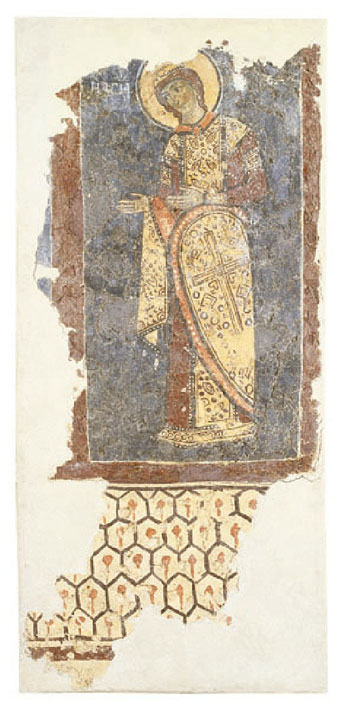Type: Aisleless, Cross in - Square - Caved Church
Date: 10th-11th century
Description:
In an altitude of 700 m., in the east of Penteli Monastery and in an area where the ancient pits used to be lies Penteli Cave, also known as Davelis Cave. In antiquity an altar dedicated to Pan must have existed here.
During the Byzantine period, two small churches were built in the cave. The southern church dedicated to Hagios Spyridon is literally dressed in the rock, while in the left and external side the northern chapel is dedicated to Hagios Nikolaos. The two entrances in the northern side suggest that this must have been a passage.
In the apse of the sanctuary (H. Spyridon) we can still detect a wall painting on the subject of Melismos (Holy Liturgy). In the southern side are detected graffities with angels, crosses and eagles, probably related to older habitation phases by hermits. A wall painting that reminds us of a Byzantine cloth pattern exists in the altar.
The northern chapel of Hagios Nikolaos is a not fully developed cross-in-square church. Two bolts in the ground in combination with the burial places (reliquary in the northern side) indicate its burial character.
In general, in both churches exist wall paintings and fragments of wall paintings in two layers dated to 1234/1235, according to an inscription.
A wall painting with a male figure in the southern chapel is well known, which is identified by Orlandos with the bishop of Athens, Michael Choniates. The wall painting has been removed and nowadays is displayed in the Athens Byzantine and Christian Museum, like Hagios Nikolaos dome with the Christos Pantokrator removed from the northern chapel. The wall painting of Hagia Aikaterina in royal attire in the northern chapel is also impressive.
Doula Mouriki has studied the wall paintings of the Cave. She has concluded that there are three dominant trends in the wall paintings. The most conservative one is represented by the group of wall paintings in the altar of the southern chapel (Melismos, Hierarchs, Apostles, Annunciation). The second group is of similar style and consists of the wall painting of Choniates in the southern church, but also the wall paintings of Hagia Aikaterina and Hagios Nikolaos in the northern one. Finally, a third one, namely the dome wall paintings in the northern chapel (Pantokrator, Panagia, Archangels and Prophets), express a transitional trend.















